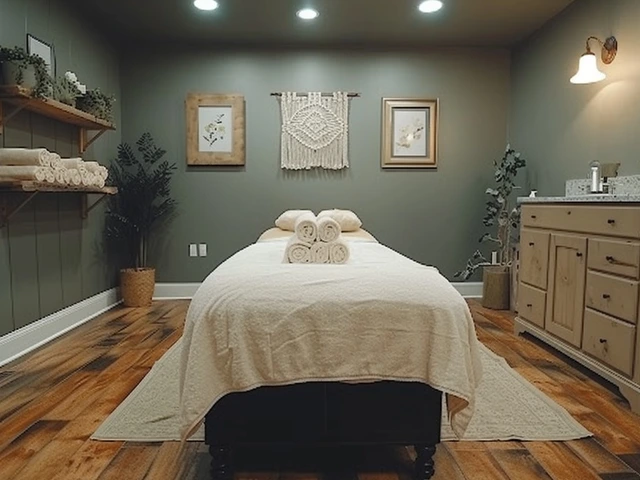Holistic Health: Real Ways to Help Your Dog (and You) Feel Better
Holistic health looks at the whole picture: body, mind, and daily routine. For dogs that means good food, regular movement, calm time, and hands-on care like massage. You don’t need fancy gear or weird supplements—small, consistent changes add up fast.
Start with a simple daily routine. Feed at regular times, walk or play at predictable parts of the day, and give short training or puzzle sessions to keep the brain busy. Dogs thrive on predictability. A steady routine lowers stress, helps digestion, and improves sleep.
Easy hands-on care: massage and touch
Massage is one of the most practical holistic tools. Use long, gentle strokes down the back, soft circular kneads on the shoulders, and light squeezes on the thighs. Ten minutes a day helps relax tight muscles and builds trust. Watch your dog’s face and body—if they pull away, whine, or tense, stop and try a lighter touch.
If your dog has stiff spots, press gently into the muscle and hold for a few seconds; release when the muscle softens. For persistent pain or limping, book a session with a certified canine massage therapist or your vet before continuing at home.
Food, supplements, and simple nutrition moves
Good food is a cornerstone. Add small amounts of omega-3 rich foods like salmon oil (vet-approved dose), a spoon of plain canned pumpkin for digestion, or a few blueberries for antioxidants. Avoid toxic foods: chocolate, grapes, onions, garlic, and anything with xylitol. Always check doses with your vet before starting supplements.
For weight control, swap high-calorie treats for chopped carrots, green beans, or a handful of kibble used as reward. Break meals into two feedings if your dog tends to gobble or shows anxiety before mealtime.
Mental and emotional health matter. Teach short focus exercises, hide treats for sniff games, and rotate toys so play stays interesting. A tired brain often means calmer behavior at home.
Use calming tools wisely. Gentle music, a quiet corner with a comfy bed, and consistent commands reduce worry. Some dogs respond well to wrapped pressure (anxiety vests) or dog-safe pheromone diffusers. Be careful with essential oils—many are unsafe for pets. Lavender in a low, well-ventilated diffuser might help, but check with your vet first.
Know when to bring in pros. If your dog has ongoing pain, big behavior shifts, poor appetite, or sleep problems, book a vet visit. Physical therapists, certified massage therapists, and behaviorists can add targeted help and prevent small issues from becoming big ones.
Holistic care is about everyday choices: calm routines, gentle touch, smart food, and mental work. Start small—five minutes of massage, one healthy swap at meals, a new sniff game—and you’ll see steady improvements in mood, mobility, and your bond with your dog.

Polarity Therapy: Unlocking Natural Healing
Polarity therapy is a unique form of energy healing that blends touch, movement, and simple nutrition ideas to support the body's natural ability to heal. This article explores what polarity therapy is, how it works, and why it's gaining traction for stress relief and holistic wellness. You'll discover what to expect during a session and practical tips to get started. It's an approachable way to balance mind and body without needing special equipment or experience. Curious about feeling more relaxed and recharged? This guide makes polarity therapy simple and clear.

Healing Touch: A Game Changer in Holistic Health
Healing Touch is revolutionizing the realm of holistic health by blending ancient energy practices with modern therapeutic methods. This approach aims to restore balance and promote wellness through gentle, non-invasive techniques. Discover the secrets behind how Healing Touch can enhance well-being, reduce stress, and accelerate recovery. Learn practical tips and scientifically-backed facts about this innovative therapy. Whether you're a wellness enthusiast or seeking alternative health solutions, this article offers insightful information on making Healing Touch a part of your lifestyle.

Medical Massage: A Holistic Approach to Well-Being
Medical massage is a therapeutic approach that goes beyond relaxation, often tailored to specific health needs. It’s known for its potential to alleviate pain, reduce stress, and enhance the body's natural healing processes. Unlike regular massages, medical massages are often prescribed by doctors and address physical issues such as chronic pain. Understanding how medical massage fits into a holistic health approach can help in achieving overall well-being.

Discover the Benefits of Hellerwork: Top 10 Reasons to Experience It
Hellerwork is a powerful form of structural bodywork designed to improve posture, flexibility, and alleviate pain. It combines deep tissue massage with movement education and dialogue to promote holistic well-being. Learn how Hellerwork can transform your physical and mental health, enhancing your quality of life and providing long-lasting results. With its personalized approach tailored specifically to each individual's needs, Hellerwork offers unique benefits that make it worth trying today. Dive into the top ten reasons why you should consider integrating this therapy into your wellness routine.

Unlocking the Benefits of Maya Abdominal Massage for Whole Body Health
Maya Abdominal Massage is not just a spa treatment; it's a profound form of therapy rooted in ancient Maya traditions, aimed at enhancing both physical and mental health. This therapeutic technique focuses on the abdomen, a vital area housing many of our bodily organs. Through gentle, non-invasive manipulation, this massage helps to improve organ function, relieve common digestive and reproductive issues, and reduce stress. By exploring its history, benefits, techniques, and modern-day applications, individuals can gain a comprehensive understanding of how this practice promotes overall health and well-being.

Discovering the Power of Craniosacral Therapy in Holistic Wellness Trends
Craniosacral therapy is rapidly becoming a prominent figure in the realm of holistic health care, offering a gentle yet powerful approach to healing and wellness. This therapy leverages subtle manipulations of the skull and spine to enhance the body's natural healing capabilities. It holds the potential to address a wide variety of health issues, from chronic pain to stress-related ailments. Dive into the intricacies of craniosacral therapy and discover why it's considered the next big thing in holistic health.

Exploring Healing Touch Therapy: A Holistic Approach to Wellness
Discover the power of Healing Touch therapy in this comprehensive article. From understanding its origins and principles to uncovering the science behind this energy-based approach, readers will gain a new perspective on health and healing. The article delves into how Healing Touch can complement traditional medicine, details practical applications, and shares tips for integrating this therapy into daily life. Get ready to explore the transformative potential of Healing Touch and how it contributes to overall wellness.

Shiatsu Massage: The Unexplored Jewel of Alternative Healing Practices
Uncover the ancient secrets and modern benefits of Shiatsu, a Japanese massage technique that has emerged as a hidden gem in the realm of alternative medicine. Through gentle but firm pressure, Shiatsu not only offers relaxation but also aims to stimulate the body's self-healing capabilities. This comprehensive guide dives deep into the principles of Shiatsu, explores its health benefits, offers practical tips for a session, and even discusses how to incorporate these techniques into your daily routine for improved holistic health.

Stone Therapy: A Holistic Approach to Health and Wellness
Hi there! This post shares insightful knowledge about the holistic approach of Stone Therapy towards health and wellness. Leaning on the wisdom of natural elements, this entry delves into how these stones can promote balance and healing. From the science behind it, to different methods of use, this article serves as a comprehensive guide to enhancing well-being through stone therapy. So, if you're looking for fresh, exciting ways to boost your health journey, stick around and let's explore this together!

Incorporating Acupressure into Your Wellness Routine
As a wellness enthusiast, I've recently discovered the incredible benefits of incorporating acupressure into my daily routine. This ancient healing method can equip you with better stress management skills, offer improved relaxation and even help in overcoming chronic ailments. So let's delve in together to understand the basics of acupressure, how it can contribute to our overall wellbeing and some quick tips to implement it in our daily lives. Remember, a proactive approach to wellness is the key to radiant health, and these tiny steps could add up to significant benefits.

Fire Massage: Ignite Your Path to Relaxation
Aug, 8 2023

Can Better Gut Health Reduce Inflammation?
Sep, 19 2023

